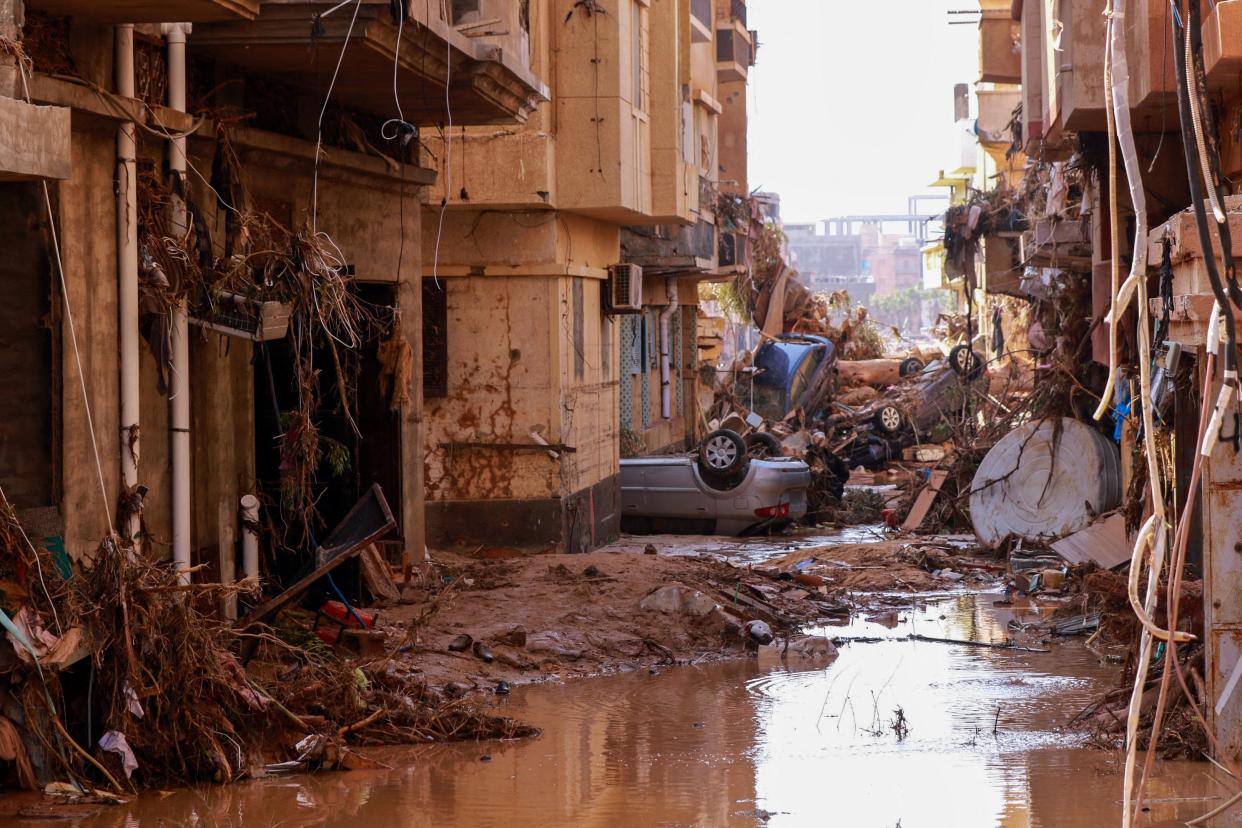Understanding the medicane storm that devastated Libya

A horrible storm system, called a medicane, hit Libya recently and the associated floods killed as many as 20,000 people in a single day.
Those kind of storm-related fatalities are almost unheard of in the modern times we live in. Even the fiercest hurricanes traditionally only claim a very small fraction of the victims that Libya saw during this storm. So what happened to cause this kind of destruction and death?
About Libya
Libya is a country in Northern Africa and is a southern border of the Mediterranean Sea. More than 90% of the country is in the Sahara Desert, receiving very little rainfall.
The country is in political turmoil with two opposing groups each running half the country; one runs the east and one runs the west. Leadership and governance is in constant flux. This becomes important shortly.
The city where this devastation occurred is called Derna. It directly borders the Mediterranean Sea but, due to geographic and atmospheric patterns, receives relatively little rainfall and is considered a hot and arid climate.
There is a main riverbed, called the Wadi Derna, that runs through the town and through the center of the country, but it is most often a dry riverbed.
What is a medicane?
The storm system that caused all of this is called a medicane, which is a combination of the words “Mediterranean” and “hurricane.”
It is the name given to a storm that forms in just this area, and typically differs from a hurricane in that it is much smaller, does not last nearly as long, has much less wind and typically less rain than a hurricane.
Most of the reasons for these differences can be understood by observing the relatively small size of the Mediterranean Sea compared to the oceans where hurricanes form. There is just not enough open warm water for a large hurricane-like storm to form in the Mediterranean.
Medicanes typically start on the east side of the sea and hit countries on the western part of the sea. When they do hit, they tend to dump quite a bit of rainfall and have winds that can reach hurricane Category 1 speeds (74 mph) at best.
Climate change's effect
Typically, only 1-3 medicanes form in the Mediterranean Sea each fall season, which is when the sea’s water temperatures are the warmest. That warm water is the fuel.
They usually only last a day or so, and about one hits a bordering country each year, resulting in some flooding with the ultimate death toll in the single digits. Far different than the 10,000-20,000 people who died in the Libya medicane.
Scientists say that significant climate changes the last decade have changed the weather patterns, atmospheric and water temperatures in and around the Mediterranean Sea. As a result, the number of medicanes that develop each year has actually decreased.
However, the ones that do form are substantially stronger than any they have ever seen. They are also lasting longer, dumping more rain, contain higher winds, and taking tracks over areas that typically never experienced these storms. Recent medicanes now contain winds up to 99 mph (Category 2 hurricane level) and dump 18 months' worth of rain in just 24 hours.
The scientists say that this all coincides with a rapidly warming sea temperature, which is the main fuel for the medicanes. Oceans and seas have absorbed 90% of the all human-produced excess heat, and these warmer temperatures are like giving the storm an extra fuel boost.
As most people know, warmer water is able to evaporate much more vapor into the atmosphere compared to cooler water.
Another human cause
Scientists have no doubt that the recent explosion of medicane strength is human-caused.
However, the second part of this horrible situation was also human-caused: politics. If a similar storm hit the neighboring country, Egypt, the death toll would have most certainly been far less.
The political unrest in Libya has caused two things. First, the infrastructure of the city was allowed to go unchecked. The dams that failed had not undergone repair or testing for years and the development along the dry riverbeds exploded without any regard to flooding concerns.
Secondly, countries in unrest typically have no reliable warning systems or weather/climate monitoring systems. If the country had a reliable weather prediction and warning system, most people could have been warned far before catastrophe occurred.
Mike Szydlowski is a science teacher and zoo facilitator at Jefferson STEAM School.
TIME FOR A POP QUIZ
What is a medicane?
How is a medicane different than a hurricane?
What fuels all of the biggest storms on Earth?
Why was Derna, Libya not used to medicane storms?
What two human causes made this storm particularly deadly?
LAST WEEK'S QUIZ ANSWERS
Why do most people feel helpless when it comes to helping the environment?
Most people feel that the work of just one person won’t make any difference with such a large population. However, time and time again, big movements start with just a single person.
Why are single-use plastics (cups and bottles) a good place to start when making a difference?
Single-use plastics take a lot of energy to produce for such a short use period.
What community trait makes people litter more?
Research has found that people seeing litter on the ground makes them litter more as they feel as a little more won’t make a difference.
What old practice should we get back to doing in order to save a lot of energy and resources?
People used to bring their own utensils everywhere they went.
How many grams of carbon does 1.4 million people produce a year?
The article mentions that 1.4 million people produce 7.2 teragrams of carbon.
This article originally appeared on Columbia Daily Tribune: Understanding the medicane storm that devastated Libya

